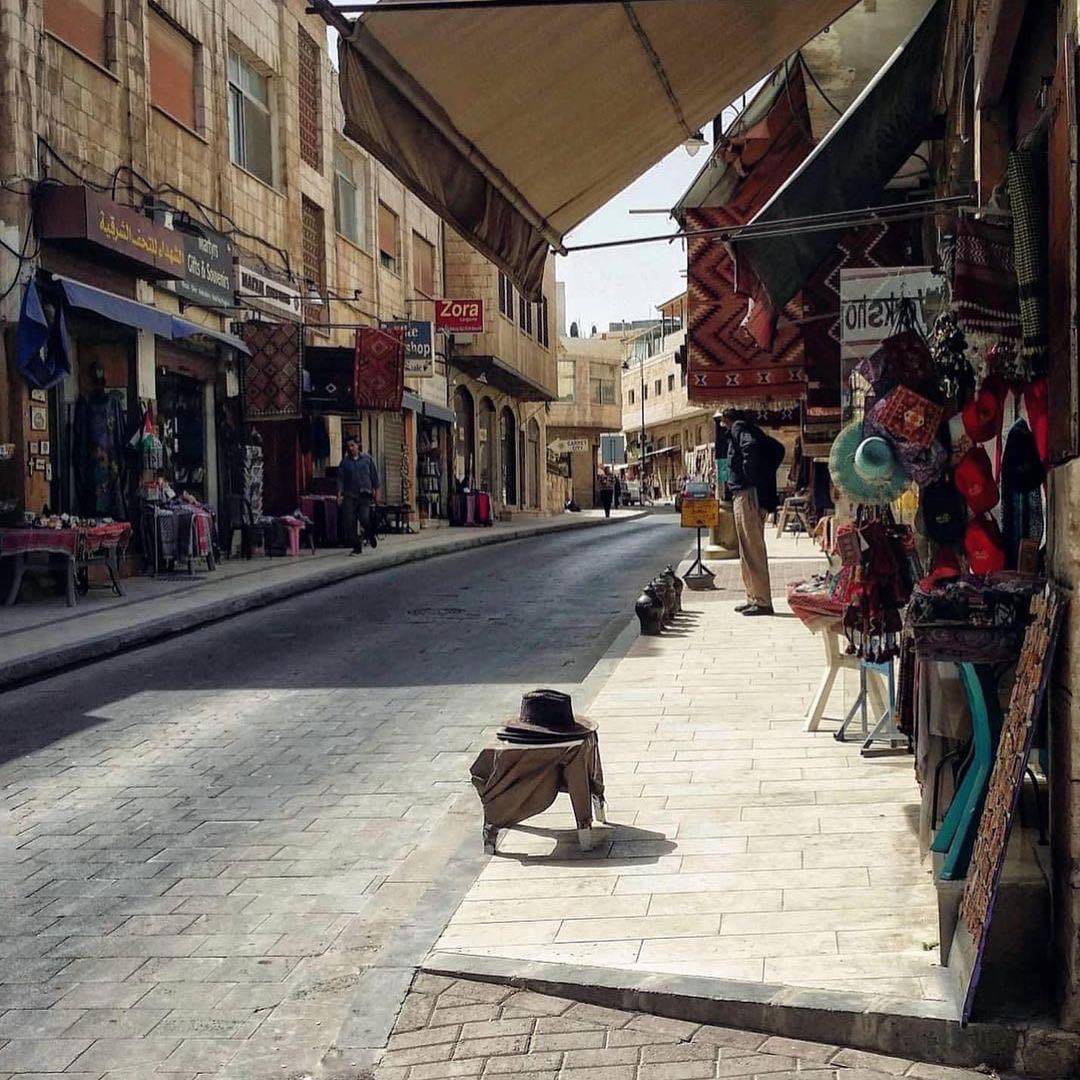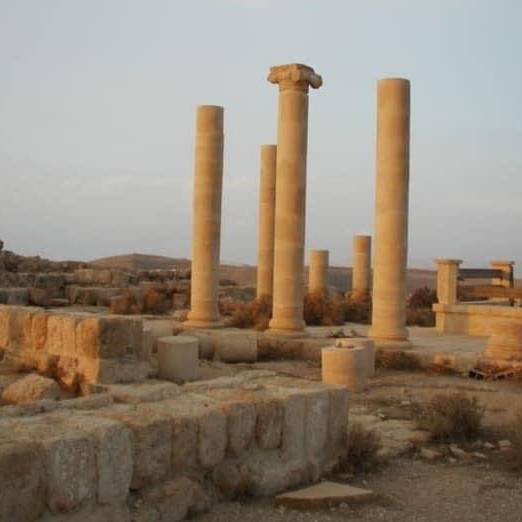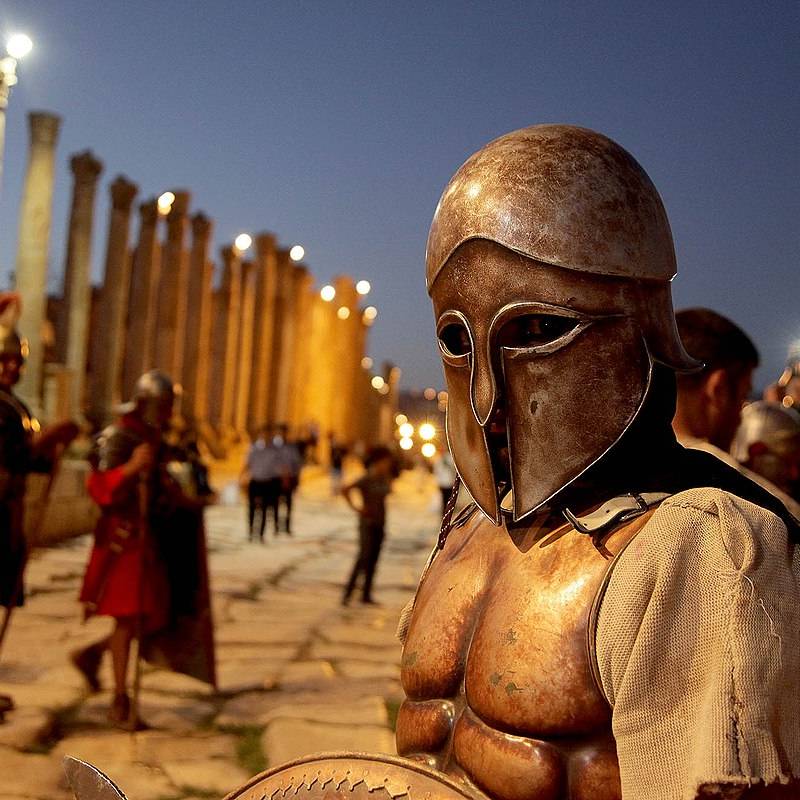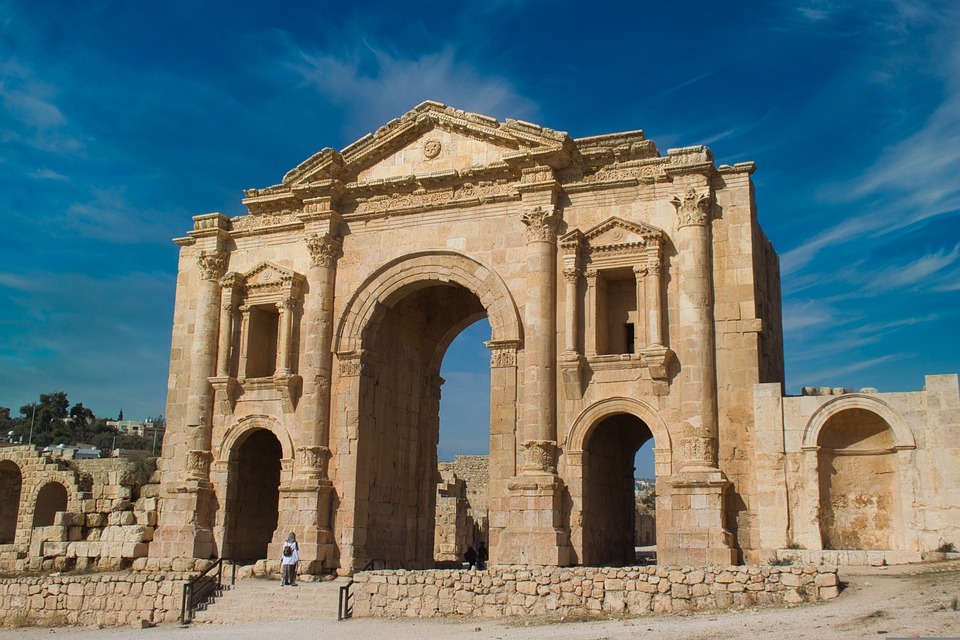
Home < Jordan < Ma’in Hot Springs Ma’in Hot Springs Ma’in Hot Springs, also known as Hammamat Ma’in, is a popular natural attraction in Jordan located approximately 60 kilometers southwest of the capital, Amman. These hot springs are situated in the middle of the scenic mountains of the Dead Sea Rift Valley, creating a beautiful and tranquil environment. The Ma’in Hot Springs are well-known for their therapeutic properties, and they have been a popular destination for centuries, with historical references dating back to the Roman era. The water emerges from underground hot springs at temperatures ranging from 40 to 60 degrees Celsius (104 to 140 degrees Fahrenheit). The hot springs feed several waterfalls and natural pools, which visitors can enjoy for relaxation and rejuvenation. The high mineral content of the water, including sulfur, magnesium, and calcium, is believed to have various health benefits and is said to provide relief for ailments such as arthritis and skin conditions. Apart from the therapeutic value of the hot springs, the area surrounding Ma’in is also a great spot for hiking and enjoying the picturesque landscapes of the Dead Sea region. Additionally, the nearby attractions of the Dead Sea and the ancient city of Madaba add to the allure of visiting Ma’in Hot Springs. Home < Jordan < Ma’in Hot Springs

Home < Jordan < Wadi Al Hidan Wadi Al Hidan The Wadi al-Hidan canyon offers an exciting adventure for nature enthusiasts and hikers. The canyon features dramatic cliffs, narrow gorges, and rushing waterfalls, making it an ideal destination for canyoning and hiking activities. Visitors can take guided tours or follow marked trails that allow them to explore the unique geological formations, enjoy stunning views, and witness the rich biodiversity of the area. The trails can vary in difficulty, so there are options suitable for both experienced hikers and beginners. Wadi al-Hidan is a natural wonder in Jordan and offers a fantastic opportunity to experience the country’s diverse landscapes and appreciate its natural beauty. If you plan to visit, make sure to check with local authorities or tour operators for the latest information and guidance. Home < Jordan < Wadi Al Hidan

Home < Jordan < Umm Ar Rasas Umm Ar Rasas Umm Ar-Rasas is an archaeological site in Jordan that has been recognized as a UNESCO World Heritage Site. It is located approximately 30 kilometers southeast of Madaba, not far from the King’s Highway. The site is also known as Kastron Mefa’a and was an important Byzantine and early Islamic settlement. Umm Ar-Rasas is renowned for its well-preserved mosaic floors, which are characteristic of the Byzantine era. The site contains several churches with intricate mosaic artworks that depict various religious scenes and daily life in the ancient world. One of the most notable features of Umm Ar-Rasas is the Church of St. Stephen, which houses an impressive mosaic floor that covers a vast area. The mosaic in the Church of St. Stephen at Umm Ar-Rasas is particularly famous for its detailed representation of cities in the region during the 6th and 7th centuries. It provides valuable insights into the urban layout of the time and is considered an important historical and archaeological artifact. In addition to the mosaics, Umm Ar-Rasas also features other archaeological remains, including fortifications, tombs, and water cisterns, offering visitors a glimpse into the past and the historical significance of the site. Home < Jordan < Umm Ar Rasas

Home < Jordan < Madaba Center Madaba Center One of the main streets in Madaba that is popular among tourists. It runs through the city and serves as a significant route for travelers passing through the area. The street is lined with shops, cafes, restaurants, and souvenir stores, making it a vibrant and bustling area for tourists to explore. Many visitors to Madaba spend time wandering along the city center streets, enjoying local cuisine, shopping for souvenirs, and experiencing the city’s authentic culture. The street offers a mix of traditional Jordanian goods, crafts, and unique mementos that appeal to tourists looking to take home a piece of Jordan’s heritage. Beyond this tourist street, Madaba’s city center offers a rich history and several other attractions, including churches with ancient mosaics, archaeological ruins, and traditional markets. It’s a great destination for history enthusiasts and those interested in exploring Jordan’s cultural heritage. Home < Jordan < Madaba Center

Home < Jordan < Mukawir Mukawir Mukawir, also known as Machaerus, is an ancient hilltop fortress located in Jordan, near the eastern shore of the Dead Sea. The site is historically significant and is best known for its connection to the biblical account of the beheading of John the Baptist. According to historical records and biblical references, Mukawir was built by King Herod the Great in the first century BC. Herod was a prolific builder and ruler of the region under Roman authority. He constructed Mukawir as one of his strategic fortresses, intended to control the eastern borders of his kingdom and defend against potential invasions from the Nabateans and other neighboring tribes. Mukawir’s historical prominence comes from its association with the imprisonment and execution of John the Baptist, a central figure in Christianity. The Gospels of Mark (Mark 6:14-29) and Matthew (Matthew 14:1-12) describe the events leading to John the Baptist’s execution at the request of Herod Antipas, the son of King Herod. According to the accounts, John the Baptist had publicly criticized Herod Antipas for his marriage to Herodias, his brother’s wife, which led to his arrest and subsequent beheading at Mukawir. Archaeological excavations at the site have revealed the remains of the fortress, including its defensive walls, towers, and a palace complex. The hilltop location offers commanding views of the surrounding Dead Sea region, further emphasizing its strategic importance. Today, Mukawir is an important archaeological site and a popular tourist attraction in Jordan. Visitors can explore the ancient ruins, learn about the history and biblical significance of the site, and enjoy the scenic views of the Dead Sea and the surrounding landscapes. It is an excellent destination for history enthusiasts, religious pilgrims, and those interested in ancient civilizations and biblical events. Home < Jordan < Mukawir

Home < Jordan < Mount Nebo Mount Nebo Mount Nebo is an important biblical and historical site located in Jordan, about 10 kilometers west of the city of Madaba. It holds significant religious significance for Christians, Jews, and Muslims alike. According to the Bible, Mount Nebo is where Moses is said to have been granted a view of the Promised Land before he died. The story is mentioned in the Book of Deuteronomy (Deuteronomy 34:1-4). From the summit of Mount Nebo, on a clear day, one can enjoy stunning panoramic views of the Jordan River Valley, the Dead Sea, and the city of Jericho. In addition to its biblical importance, Mount Nebo is home to a Franciscan monastery that was built on the site to commemorate the life of Moses. The Moses Memorial Church within the monastery complex houses beautiful mosaics that date back to the 6th century. The site has become a popular pilgrimage destination for Christians, and it also attracts tourists and history enthusiasts interested in exploring the religious and archaeological significance of the region. Visitors can learn about the history of the site through informational displays and exhibits, and they can also take in the breathtaking views from the various vantage points around Mount Nebo. The location’s unique blend of religious significance, historical context, and natural beauty makes it a must-visit destination in Jordan. Home < Jordan < Mount Nebo

Home < Jordan < Jerash Festival for Culture and Arts Jerash Festival for Culture & Arts The Jerash Festival for Culture and Arts, also known as the Jerash Festival or Jerash Arts Festival, is an annual cultural event that takes place in the ancient city of Jerash, located in Jordan. Jerash is renowned for its well-preserved Roman ruins and historical significance, making it an ideal location for hosting such a festival. The festival typically spans several days and features a diverse range of cultural performances and artistic exhibitions. It aims to celebrate the rich heritage of Jordan and the broader Arab world, showcasing various forms of art, music, dance, theater, and folklore. Local and international artists, musicians, and performers participate in the event, making it a melting pot of cultures and traditions. The Jerash Festival offers visitors a unique opportunity to immerse themselves in the vibrant arts scene of the region while also experiencing the historical charm of the ancient city. It attracts both locals and tourists alike, drawing a significant crowd each year. Home < Jordan < Jerash Festival for Culture and Arts

Home < Jordan < Roman Chariot Races Roman Chariot Races In ancient times, Jerash, also known as Gerasa, was home to a vibrant chariot racing tradition, a popular and thrilling sport of the Roman era. Chariot racing was a significant part of the cultural and social life in many Roman cities, and Jerash was no exception. The grand Roman Hippodrome in Jerash served as the venue for these exhilarating races, where skilled charioteers competed for fame and glory, and enthusiastic crowds gathered to witness the exciting spectacle. The Roman Hippodrome in Jerash was an impressive structure with a long and straight track, flanked by stone seating galleries on both sides, accommodating thousands of spectators. The charioteers, often highly skilled and daring athletes, drove two-wheeled chariots drawn by teams of powerful horses. They raced around the track in a bid to win the favor of the crowd and gain victory in the fiercely competitive races. The chariot races were not just about speed and agility; they were also displays of exceptional horsemanship and nerve. The drivers had to skillfully navigate the perilous turns and maneuver their chariots amid the chaos and excitement of the race. The races were a thrilling and dangerous spectacle, with crashes and collisions adding to the drama.. Today, while the chariot races of ancient Jerash may be a thing of the past, the Roman Hippodrome remains a major attraction for modern visitors, offering them a glimpse into the vibrant and dynamic cultural life of the Roman period. Tourists can explore the well-preserved ruins of the Hippodrome, envisioning the excitement and energy that once filled its grand stands during the days of chariot racing in ancient Jerash. Home < Jordan < Roman Chariot Races

Home < Jordan < The Archeological Site The Archeological Site Jerash is a renowned archaeological site located in Jordan, approximately 48 kilometers (30 miles) north of the capital city, Amman. Known as “Gerasa” in ancient times, Jerash is one of the best-preserved Greco-Roman cities in the Middle East and holds immense historical and cultural significance. The history of Jerash dates back to the Bronze Age, but it reached its peak during the Roman period when it became a prosperous city of the Decapolis League, a confederation of ten ancient cities in the region. Jerash’s prosperity was attributed to its strategic location on the trade routes, which facilitated the exchange of goods and ideas between different civilizations. Today, Jerash stands as a remarkable archaeological site, boasting a vast array of well-preserved ruins and structures that provide valuable insights into the Roman and Byzantine periods. Visitors to the site can witness a harmonious blend of Greco-Roman and Eastern architectural styles. Among the prominent highlights of Jerash are: Hadrian’s Arch: A grand entrance gate built to honor Emperor Hadrian’s visit to the city in 129 AD. Oval Plaza: A vast and impressive public square surrounded by columns and adorned with the remains of various temples and public buildings. Cardo Maximus: The main thoroughfare of the ancient city, lined with colonnades and once bustling with commerce. Temple of Artemis: One of Jerash’s largest temples, dedicated to the goddess Artemis. South Theatre: A well-preserved Roman theater with a seating capacity of approximately 3,000 spectators, where cultural events and performances are still held today. North Theatre: A smaller theater, also used for theatrical and musical performances. Nymphaeum: An elegant public fountain with intricate carvings and sculptures. Visiting Jerash offers a unique opportunity to step back in time and explore the grandeur of the Roman Empire in the heart of the Middle East. It is a testament to the region’s rich history and a must-visit destination for history enthusiasts and travelers alike. Home < Jordan < The Archeological Site










